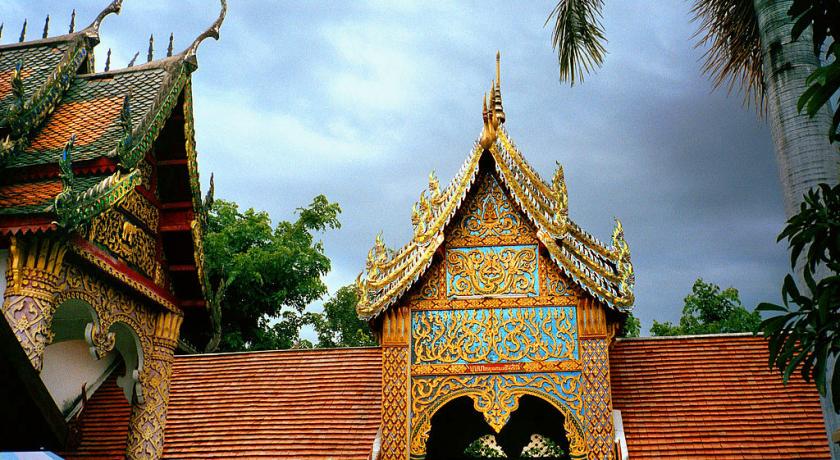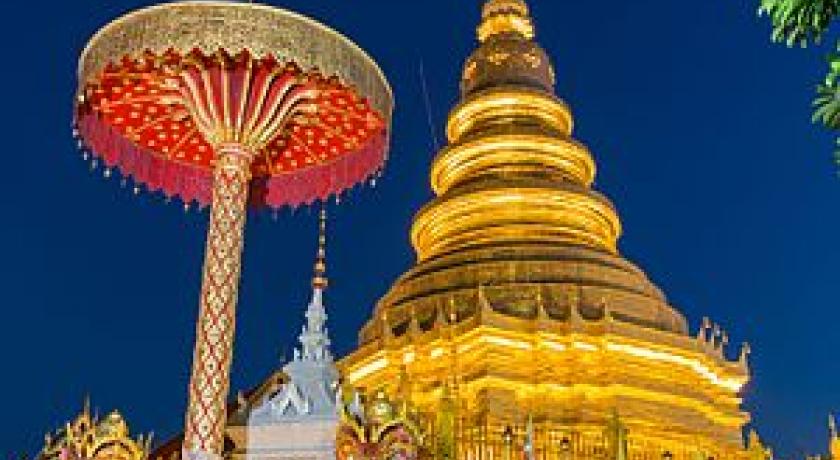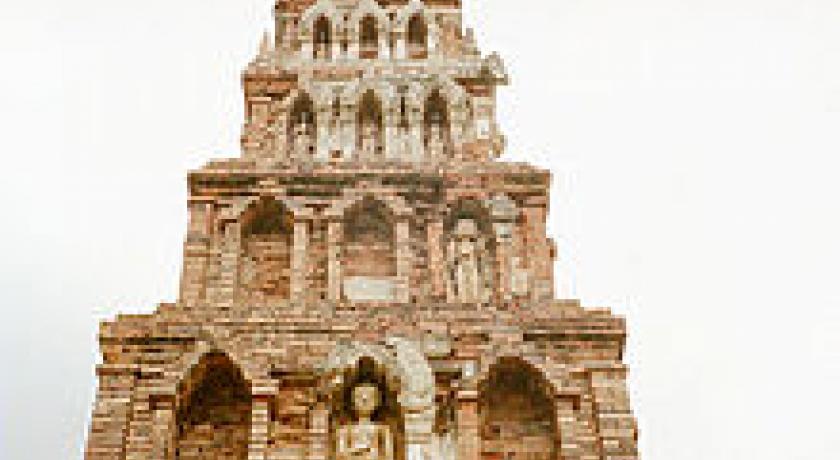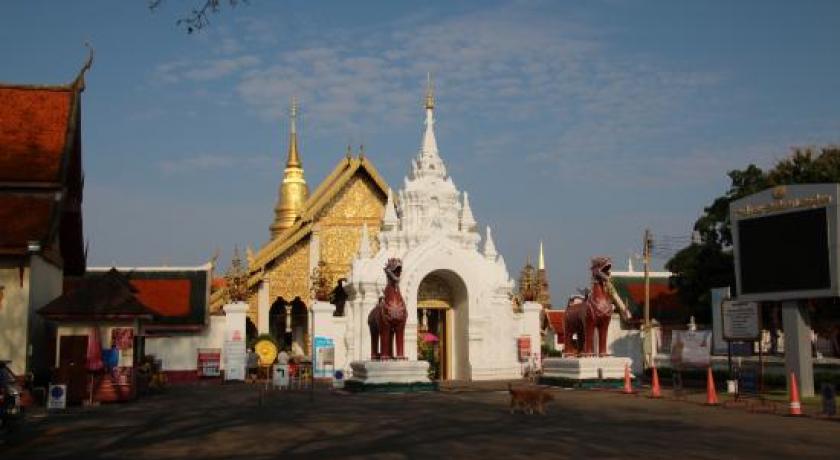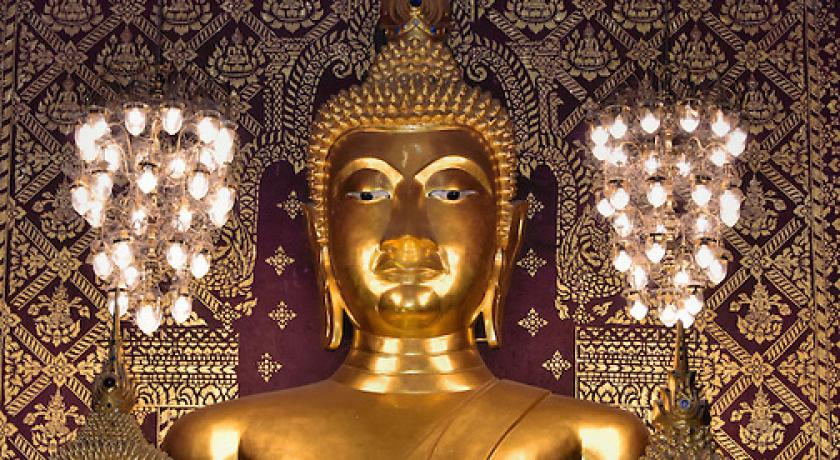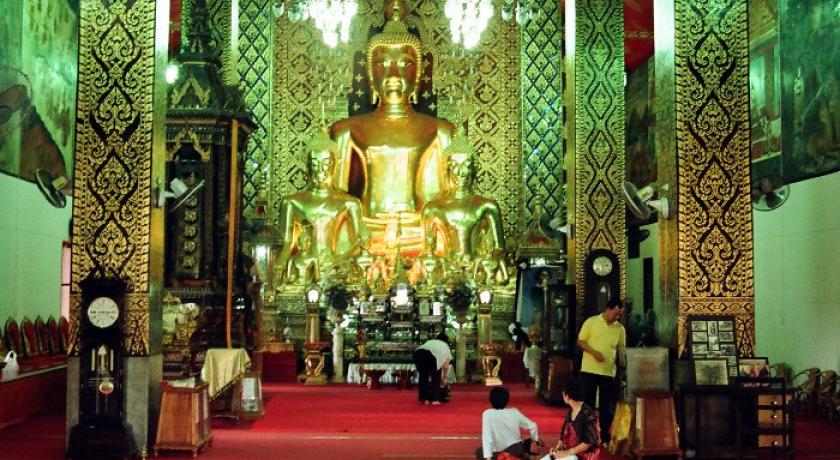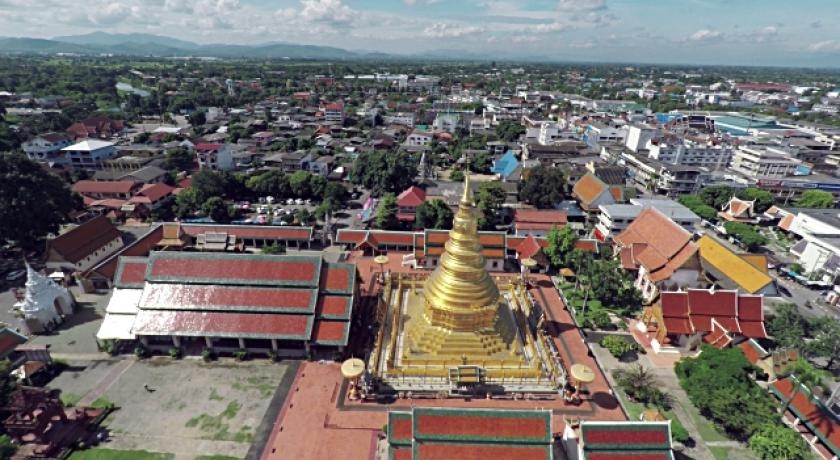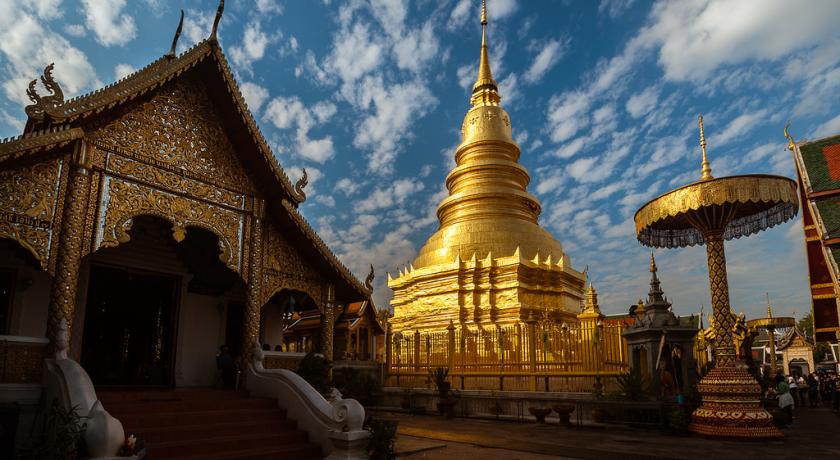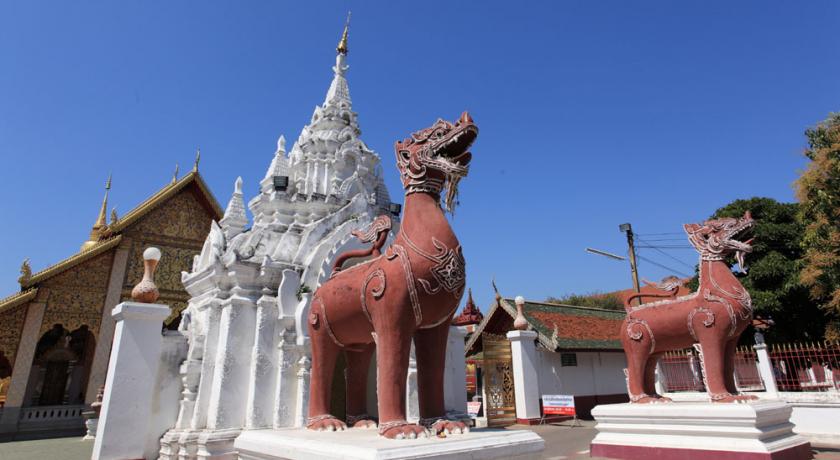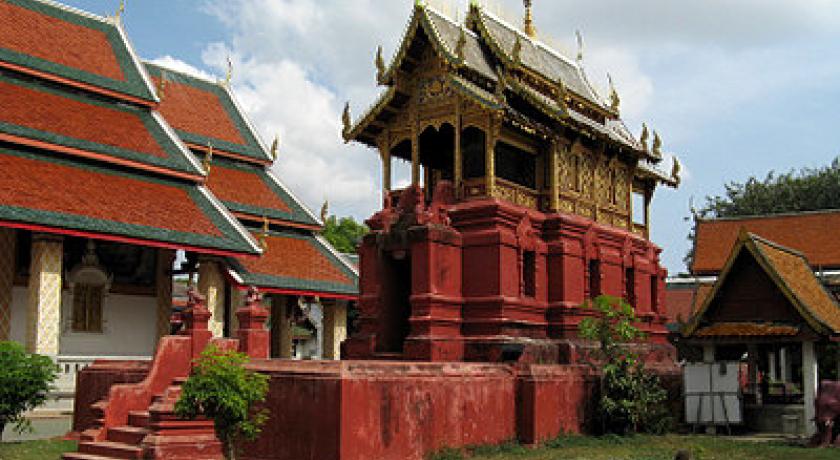Description
Wat Phra That Hariphunchai (Thai: ÓĖ¦ÓĖ▒ÓĖöÓĖ×ÓĖŻÓĖ░ÓĖśÓĖ▓ÓĖĢÓĖĖÓĖ½ÓĖŻÓĖ┤ÓĖĀÓĖĖÓĖŹÓĖŖÓĖ▒ÓĖó) is a Buddhist temple (wat) in Lamphun, Thailand. The temple's origins date from the 11th century but the central stupa is thought to originate in the 9th century.
History
Wat Phra That Hariphunchai's earliest origins were in 897 when the then king of Hariphunchai is said to have built a stupa (now the central stupa) to house a hair of the Buddha. The present compound, founded by Hariphunchai King Athitayarai, dates from 1044.
The temple was first rebuilt in 1443 by King Tilokaraja of Lanna kingdom Chiang Mai. The temple's pyramid-shaped Chedi Suwanna was built in 1418. In the 1930s temple renovations were made by the northern Thai monk Khru Ba Sriwichai.
Architecture
The restoration of 1443 enlarged and enhanced the central stupa, including the incorporation of repousse Buddha images on bronze sheets affixed to the stupa bell element (anda). These repousse Buddhas are indicative of the Lanna Early Classic period.
The unusual pyramid-shaped, 46 m high Chedi Suwanna in the northwest of the compound is in the Dvaravati-style of the Haripunchai period and believed to be modeled on similar stupas at nearby Wat Chama Thewi (Wat Kukut).
The chedi is featured on the reverse of the one-satang coin.
Also near the wihan is a large bronze gong, purportedly the world's largest. The gong dates from 1860. It also houses a 15th-century Lanna Buddha. Near the wihan is a library of 19th-century origin. Wat Chama Thewi (Wat Kukut) The library's staircase features Nga images.
Source https://en.wikipedia.org/wiki/Wat_Phra_That_Hariphunchai
Address
Mueng lamphun
Tailandia
Lat: 18.577310562 - Lng: 99.007904053


